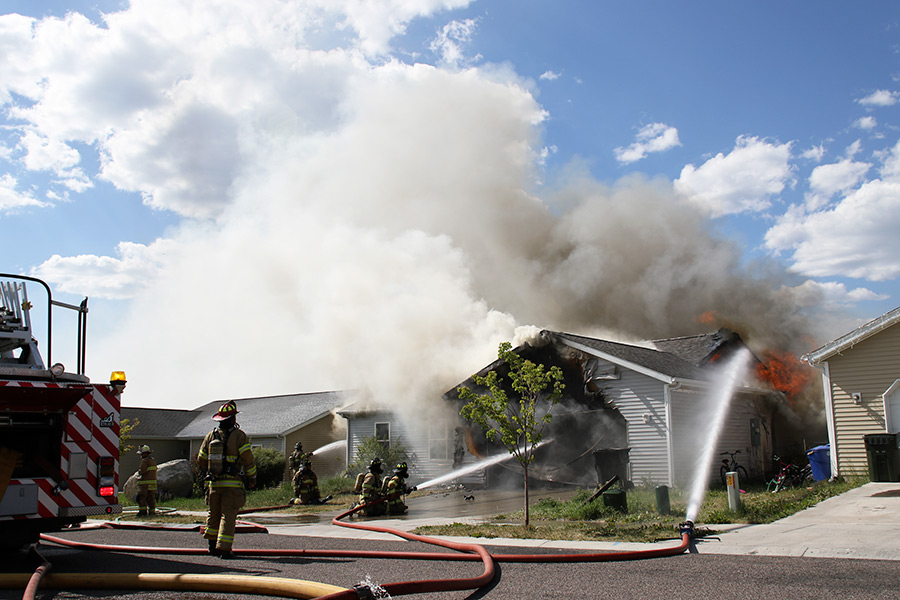When Amy Beick signed up as a volunteer at the Smith Valley Fire Department a decade ago, the fire crew that helps protect the west side of the Flathead Valley responded to about 150 to 180 calls annually.
Ten years later, the number of calls has more than doubled, and Beick, now chief of the department, predicts 2017 will be even busier. She and other fire chiefs across Northwest Montana are worried about the increase in calls coinciding with a decrease in volunteer firefighters.
“People assume that if they call 911 a fire truck and an ambulance will be coming down the road in a few minutes, but what happens if there aren’t any volunteers to staff that truck?” Beick asked. “It’s kind of scary when we’re responding to an incident and we don’t know who can come.”
The Flathead Valley is part of a larger trend across Montana and nationwide in which the number of volunteer firefighters has dropped. Eighty-five percent of fire departments across the country rely on community volunteers to respond to calls. According to the Montana State Fire Chiefs’ Association, there are approximately 10,000 volunteer firefighters statewide. Of the 20 fire departments and ambulance services in Flathead County, only four are staffed 24 hours a day by full-time paid personnel. The rest rely largely on volunteers.
Departments rarely have trouble gathering the resources to respond to one call, Flathead County EMS Manager Dick Sine said. Problems arise, however, when multiple calls come in the same time period. That’s when mutual aid agreements go into effect. When a fire department is called to an emergency within their district, it calls upon departments from surrounding communities for additional calls if necessary. However, if one department is dispatched to another community, response times increase because firefighters are responding from farther away. While the agreements worked in the past, Sine said, a growing population and an increasing number of calls are straining the system.
“We’re really stretched to the limits at this point,” he said. “Everyone is ready, willing and able to handle that first call. But when we start getting two or three calls at a time, then we start to struggle.”
“If we don’t address this soon,” he added, “we’re going to be in serious trouble.”
Perhaps no department in the valley relies on its mutual aid agreements more than Kalispell. Fire Chief Dave Dedman said his department, which has 29 full-time firefighters on three shifts, has seen the number of calls increase by 2 or 3 percent every year. From May to October 2015, the Kalispell Fire Department responded to 1,233 calls; during that same period in 2016, it responded to 1,387 calls.
“We have a lot of good and dedicated people all across the valley, but there just aren’t enough when you get multiple calls,” he said.
Columbia Falls Fire Chief Rick Hagen said when he began volunteering in the 1980s — first in Columbia Falls and later at the Bad Rock Fire Department — there was never a shortage of manpower and most fire departments had a list of people waiting to volunteer.
Hagen attributes the lack of volunteers to a number of factors, but mostly the economy. People are now working longer hours and many of them have less time to volunteer. He said being a volunteer firefighter is a huge commitment that involves extensive training.
“I think the time commitment scares some people away,” he said.
Beick said she is concerned about having enough firefighters to deal with the growing demand of Smith Valley’s services. Last year, Smith Valley started its own ambulance service with a paramedic and EMT at the station 24/7. Beick said if the number of volunteers continues to decline, the department might have to look at hiring full-time firefighters in the future. The only problem with that, she said, is finding the money.
“It’s a catch-22 for us,” she said. “We get one or two calls a day sometimes, and sometimes we don’t have enough volunteers to respond to those calls. At the same time, we don’t have enough money to staff the department with full-time firefighters.”
By The Numbers
20: Fire departments in the Flathead Valley
16: Fire departments in the Flathead Valley that rely on volunteers
10,000: Volunteer firefighters in Montana
85 percent: Fire departments that rely on volunteers across the country
4,577: Calls Flathead County fire departments responded to between May and October 2016
